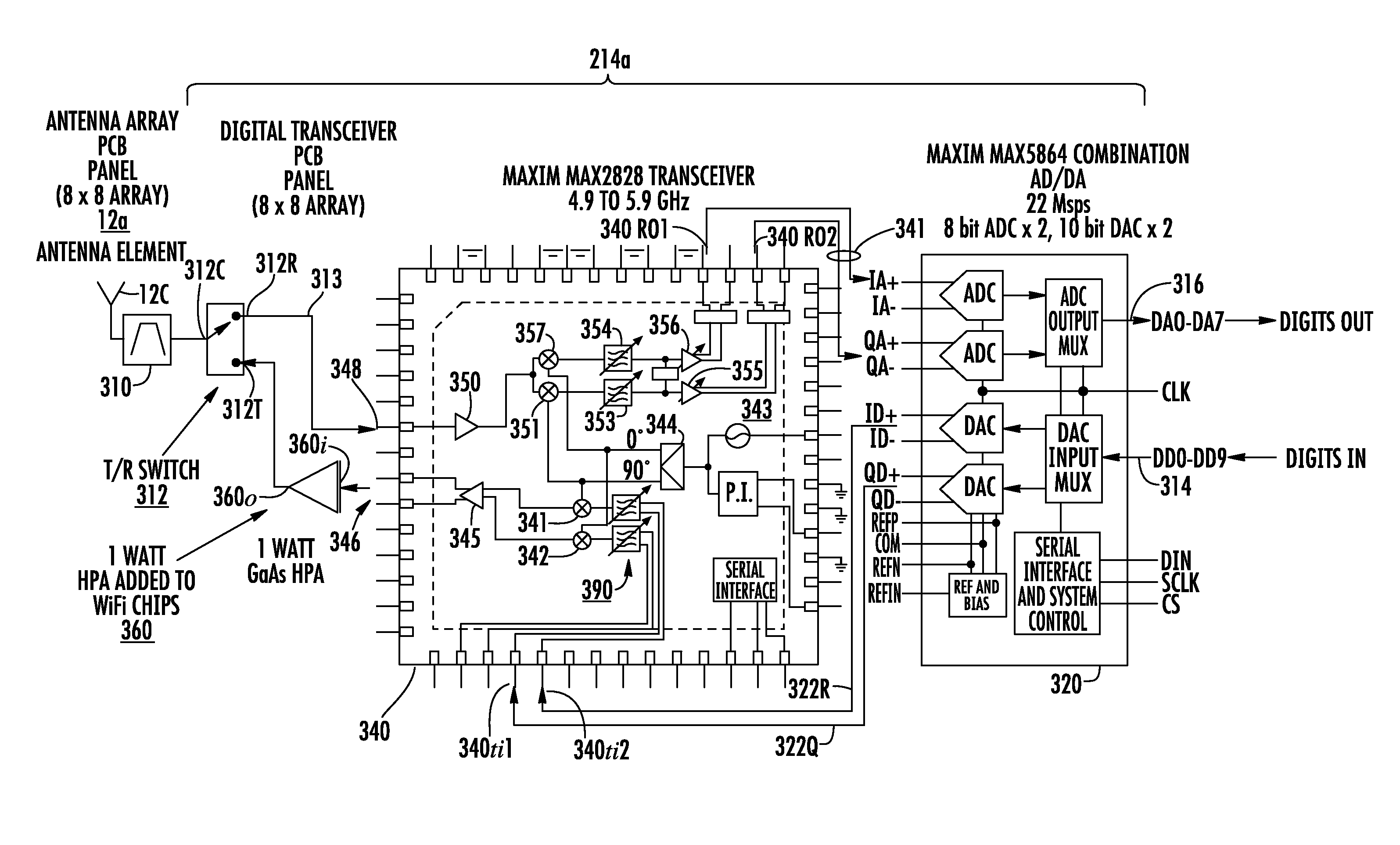Digital processing radar system
a radar system and digital processing technology, applied in the field of radar systems, can solve the problems of many vacuum tubes of radar systems giving rise to frequent failures, tube failures, reliability problems, etc., and achieve the effect of reducing aliasing in the downconversion
- Summary
- Abstract
- Description
- Claims
- Application Information
AI Technical Summary
Benefits of technology
Problems solved by technology
Method used
Image
Examples
Embodiment Construction
[0020]FIG. 1 is a simplified block diagram of a radar system 10 according to an aspect of the invention. In FIG. 1, a set 12 of antenna elements includes plurality of elemental antennas 12a . . . 12c, 12d . . . 12f, 12g . . . 12h arranged in an antenna array. Each of antenna elements 12a . . . 12c, 12d . . . 12f, 12g . . . 12h is connected by an analog signal path to an associated one of a set 14 of up / downconverter-transceiver ADC / DACs (U / DC-Tx ADC / DACs) 14a, . . . , 14c, 14d . . . , 14f, 14g . . . , 14h. Each (U / DC-Tx ADC / DAC) of set 14 is in analog communication with the associated elemental antenna of set 12 of antennas, and in digital communication with an associated digital processor. As illustrated in FIG. 1, U / DC-Tx ADC / DACs 14a, . . . , 14c communicate with a processor 161 of a set 16 of digital processors, U / DC-Tx ADC / DACs 14d, . . . , 14f communicate digitally with a processor 162, and U / DC-Tx ADC / DACs 14g, . . . , 14h communicate digitally with a processor 16N. Each of t...
PUM
 Login to View More
Login to View More Abstract
Description
Claims
Application Information
 Login to View More
Login to View More - R&D
- Intellectual Property
- Life Sciences
- Materials
- Tech Scout
- Unparalleled Data Quality
- Higher Quality Content
- 60% Fewer Hallucinations
Browse by: Latest US Patents, China's latest patents, Technical Efficacy Thesaurus, Application Domain, Technology Topic, Popular Technical Reports.
© 2025 PatSnap. All rights reserved.Legal|Privacy policy|Modern Slavery Act Transparency Statement|Sitemap|About US| Contact US: help@patsnap.com



